February 1971 lunar eclipse
| Total Lunar Eclipse February 10, 1971 | |
|---|---|
| (No photo) | |
 The moon passes west to east (right to left) across the Earth's umbral shadow, shown in hourly intervals. | |
| Series | 123 (50 of 73) |
| Duration (hr:mn:sc) | |
| Totality | |
| Partial | |
| Penumbral | |
| Contacts | |
| P1 | UTC |
| U1 | |
| U2 | |
| Greatest | |
| U3 | |
| U4 | |
| P4 | |
A total lunar eclipse took place on February 10, 1971. The moon passed through the center of the Earth's shadow.
Visibility
It was completely visible from North America, rising from Eastern Asia, Australia, and setting over South America, Europe and Africa.
Related eclipses
Lunar year series
| Ascending node | Descending node | |||||
|---|---|---|---|---|---|---|
| Saros | Date Viewing |
Type Chart |
Saros | Date Viewing |
Type Chart | |
| 108 | 1969 Aug 27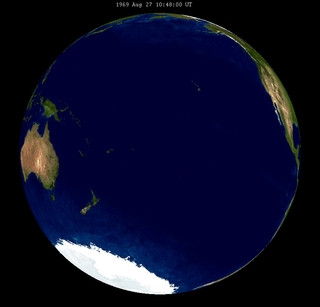 |
Penumbral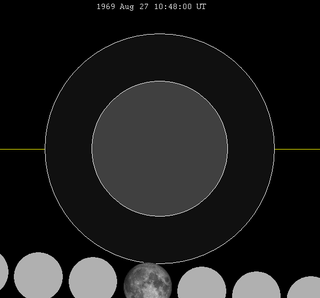 |
113 | 1970 Feb 21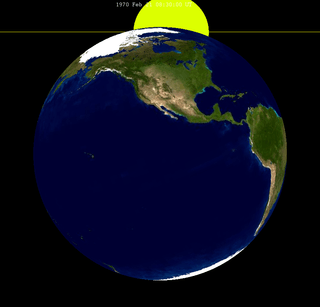 |
Partial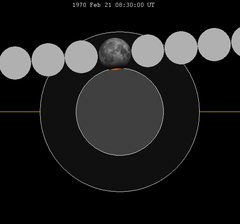 | |
| 118 | 1970 Aug 17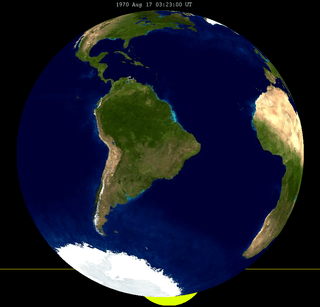 |
Partial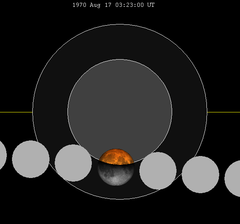 |
123 | 1971 Feb 10 |
Total | |
| 128 | 1971 Aug 6 |
Total |
133 | 1972 Jan 30 |
Total | |
| 138 | 1972 Jul 26 |
Partial |
143 | 1973 Jan 18 |
Penumbral | |
| 148 | 1973 Jul 15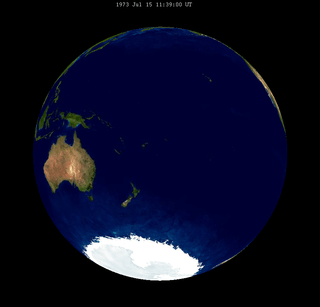 |
Penumbral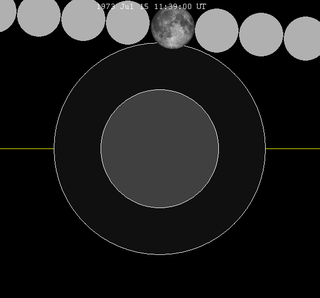 | ||||
| Last set | 1969 Sep 25 | Last set | 1969 Apr 2 | |||
| Next set | 1973 Jun 15 | Next set | 1973 Dec 10 | |||
Saros series
Lunar saros series 123, repeating every 18 years and 11 days, has 25 total lunar eclipses. The first total lunar eclipse of this series was on July 16, 1628, and last will be on April 4, 2061. The two longest occurrence of this series were on September 20, 1736 and October 1, 1754 when totality lasted 106 minutes.[1]
It last occurred on January 29, 1953 and will next occur on February 20, 1989.
See also
Notes
External links
- 1971 Feb 10 chart Eclipse Predictions by Fred Espenak, NASA/GSFC
This article is issued from Wikipedia - version of the 5/6/2016. The text is available under the Creative Commons Attribution/Share Alike but additional terms may apply for the media files.

